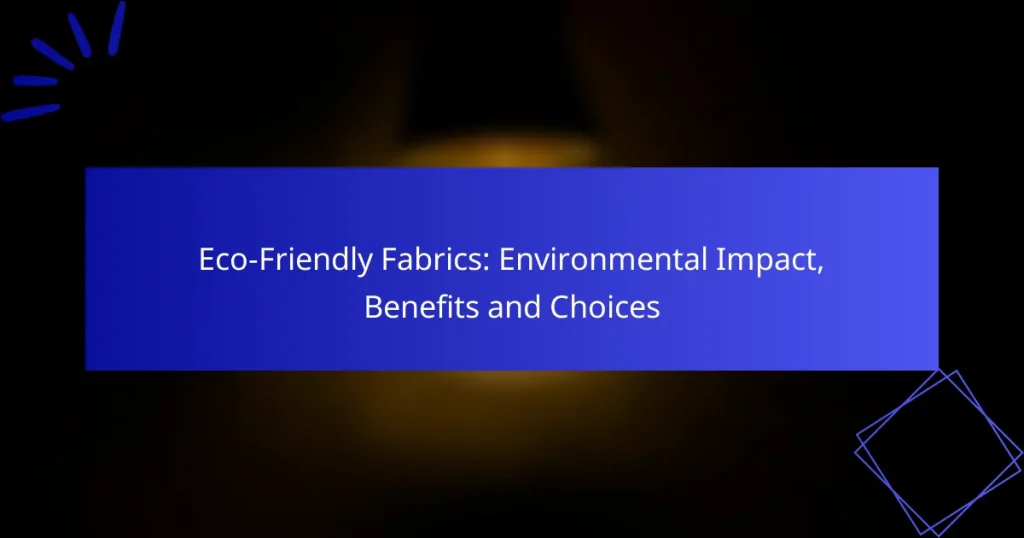
Eco-Friendly Fabrics: Environmental Impact, Benefits and Choices
Eco-friendly fabrics play a crucial role in sustainable fashion by minimizing environmental harm through their…
Sustainable clothing is an essential choice for those looking to minimize their environmental impact while supporting ethical labor practices. By opting for eco-friendly fashion, consumers can contribute to a more responsible industry that prioritizes both the planet and its people. This guide will help you navigate the world of sustainable fashion, from evaluating brands to making informed purchasing decisions.
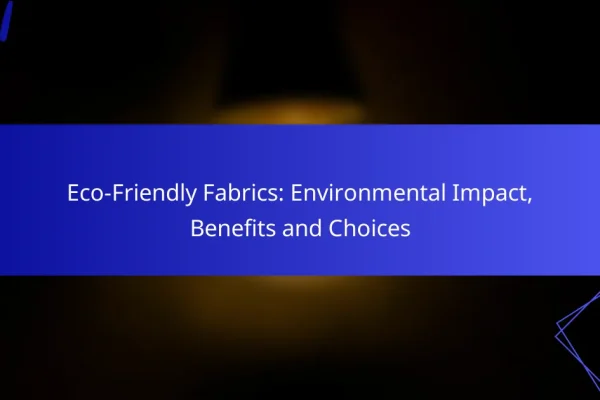
Eco-friendly fabrics play a crucial role in sustainable fashion by minimizing environmental harm through their production processes. Materials such as organic cotton, bamboo, and recycled polyester are designed to conserve resources and reduce pollution, making them a responsible choice for consumers. By opting for these fabrics, individuals not only support sustainable practices but also enjoy…
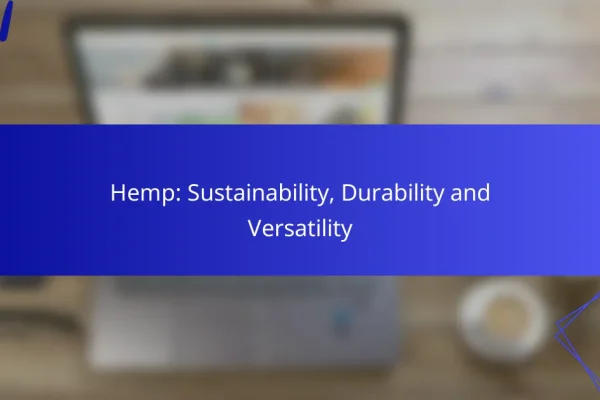
Hemp stands out as a sustainable choice in the textile industry, requiring minimal water and pesticides, which benefits the environment. Its remarkable durability ensures that products made from hemp last longer and can endure various conditions, making them appealing to both consumers and manufacturers. Additionally, the versatility of hemp allows it to be utilized in…

Building a sustainable wardrobe is a thoughtful process that combines budgeting, essential pieces, and mindful style choices. By prioritizing quality and eco-friendliness, you can create a collection of versatile items that not only reflect your personal style but also align with your environmental values. Making informed decisions about the brands you support further enhances your…
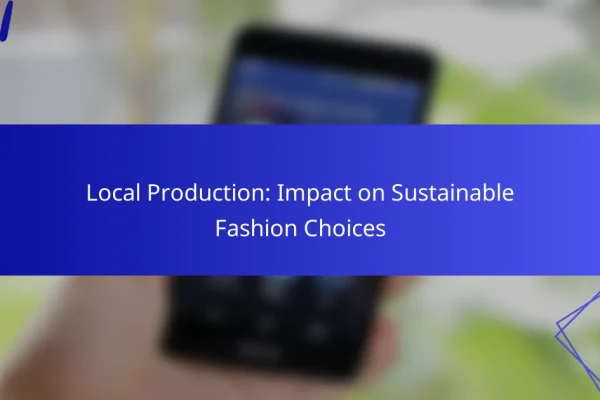
Local production plays a crucial role in shaping sustainable fashion choices by reducing environmental impact and enhancing community support. By sourcing materials and manufacturing closer to consumers, brands can lower transportation emissions and uphold ethical labor standards. This approach not only fosters a responsible fashion industry but also allows consumers to access unique designs that…

Identifying ethical brands involves a thorough examination of their practices, values, and transparency. Key indicators such as supply chain transparency, third-party certifications, and consumer feedback play a crucial role in assessing a brand’s commitment to fair labor practices, environmental sustainability, and social responsibility. How to identify ethical brands in the UK? Identifying ethical brands in…
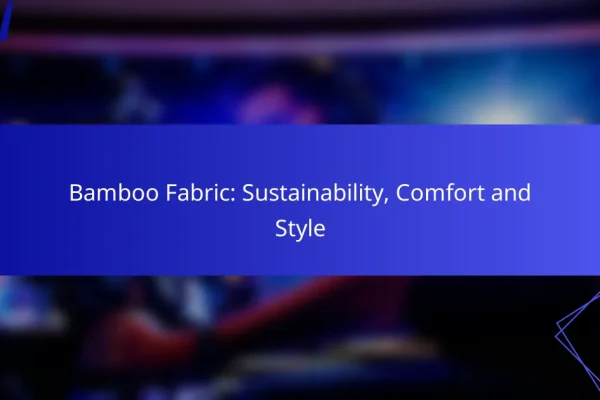
Bamboo fabric is an eco-friendly textile that stands out for its sustainability, comfort, and style. Made from a rapidly renewable resource, it requires minimal environmental impact during production and is cultivated with fewer pesticides and fertilizers. This unique fabric not only provides a soft and breathable wearing experience but also serves as a more sustainable…
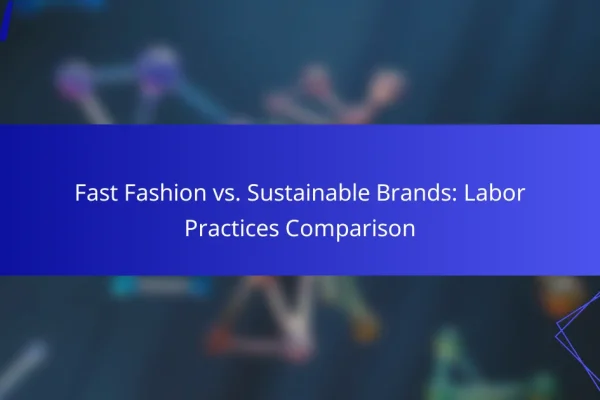
The debate between fast fashion and sustainable brands highlights significant differences in labor practices and ethical considerations. Fast fashion companies often prioritize low production costs, resulting in worker exploitation and poor working conditions. In contrast, sustainable brands focus on fair labor practices, ensuring better wages and safer environments for their employees, thereby promoting both human…
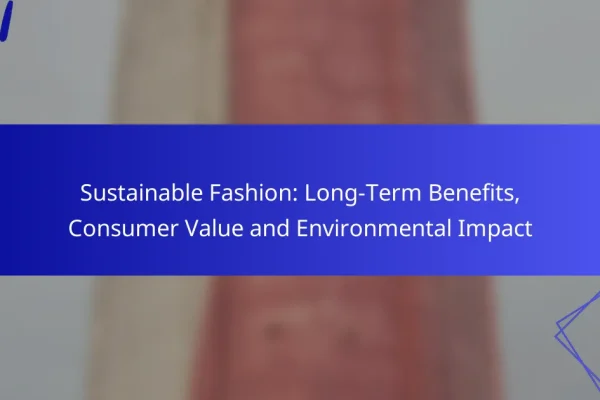
Sustainable fashion presents a compelling opportunity for consumers to embrace style while making environmentally conscious choices. By prioritizing eco-friendly materials and ethical production practices, this approach not only enhances personal values but also contributes to significant reductions in pollution and waste. As brands like Patagonia, Everlane, and Reformation lead the way, consumers can enjoy high-quality,…
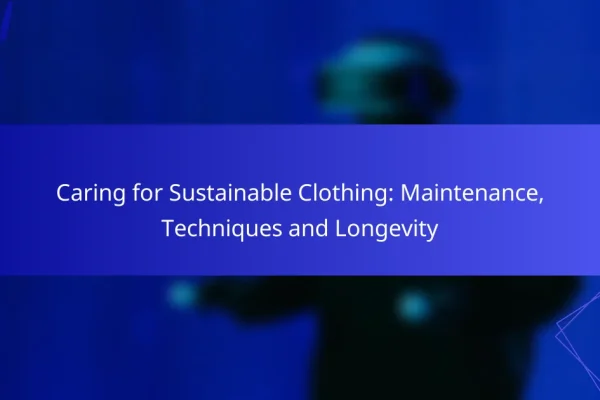
Caring for sustainable clothing is essential for extending the life of your garments while reducing environmental impact. By implementing proper maintenance techniques such as washing in cold water and using gentle cycles, you can keep your eco-friendly apparel looking great for years. Additionally, thoughtful storage and handling practices play a crucial role in preserving the…

Sustainable fashion brands are committed to customer satisfaction through return policies that align with eco-friendly practices. These policies can differ in terms of return timeframes and shipping costs, ensuring that customers are informed of their rights to return, exchange, or request refunds. By prioritizing transparency and ethical standards, these brands not only enhance the shopping…
Sustainable clothing offers numerous benefits, including a reduced environmental footprint, improved conditions for workers, and enhanced health for consumers. By choosing sustainable options, individuals contribute to a more ethical and eco-friendly fashion industry.
Sustainable clothing significantly lowers the environmental impact of the fashion industry. This includes using organic materials, reducing water consumption, and minimizing waste through recycling and upcycling practices. For instance, organic cotton uses about 91% less water than conventional cotton.
Additionally, sustainable brands often implement eco-friendly production processes that emit fewer greenhouse gases. Consumers can look for certifications like Global Organic Textile Standard (GOTS) or OEKO-TEX to identify truly sustainable options.
Sustainable clothing brands prioritize fair labor practices, ensuring that workers receive fair wages and safe working conditions. This is in stark contrast to many fast fashion companies, where exploitation is common. By supporting sustainable brands, consumers help promote ethical treatment of workers globally.
Many sustainable brands are transparent about their supply chains and adhere to standards such as Fair Trade, which guarantees fair labor practices. This transparency allows consumers to make informed choices about the brands they support.
Sustainable clothing is often made from natural, non-toxic materials that are safer for consumers. Conventional clothing can contain harmful chemicals that may cause skin irritations or other health issues. By choosing sustainable options, consumers reduce their exposure to these potentially harmful substances.
Moreover, sustainable brands frequently avoid synthetic dyes and finishes that can be detrimental to health. When shopping, look for certifications that indicate the absence of harmful chemicals, ensuring a healthier wardrobe.
Choosing sustainable clothing brands involves evaluating their practices, materials, and transparency. Look for brands that prioritize ethical production, environmental responsibility, and clear communication about their sourcing and manufacturing processes.
Certifications can help identify sustainable clothing brands that meet specific environmental and ethical standards. Look for labels such as Global Organic Textile Standard (GOTS), Fair Trade, and OEKO-TEX, which indicate compliance with rigorous criteria for sustainability and social responsibility.
When assessing certifications, consider the credibility of the certifying body. Some certifications are more recognized and respected than others, so it's beneficial to familiarize yourself with the most reputable ones in the industry.
Brand transparency refers to how openly a company shares information about its supply chain, manufacturing processes, and labor practices. Sustainable brands typically provide detailed insights into where and how their products are made.
Check the brand's website for information on sourcing, labor conditions, and environmental impact. Brands that are committed to sustainability often publish sustainability reports or have dedicated sections on their websites outlining their practices.
The materials used in clothing significantly impact its sustainability. Look for brands that utilize organic, recycled, or upcycled materials, as these options generally have a lower environmental footprint compared to conventional fabrics.
Common sustainable materials include organic cotton, Tencel, hemp, and recycled polyester. When evaluating clothing, consider not only the material but also the durability and lifecycle of the product, as longer-lasting items contribute to reduced waste over time.
Buying sustainable clothing online is easier than ever, with numerous brands dedicated to eco-friendly practices. Look for companies that prioritize ethical sourcing, use organic materials, and maintain transparent supply chains.
Patagonia's online store is a leader in sustainable fashion, offering a wide range of outdoor and casual clothing made from recycled and organic materials. Their commitment to environmental responsibility is evident in their Fair Trade Certified products and initiatives to repair and recycle garments.
When shopping on Patagonia's site, consider their Worn Wear program, which allows customers to buy used items or trade in their own for store credit. This not only promotes sustainability but also helps reduce waste.
Everlane focuses on "radical transparency," providing detailed information about the factories where their clothing is made. Their online store features a variety of stylish basics, all produced with ethical labor practices and sustainable materials.
When purchasing from Everlane, pay attention to their pricing model, which reflects the true cost of production. This approach helps consumers understand the value of sustainable clothing and encourages informed buying decisions.
Reformation is known for its trendy, feminine styles made from sustainable fabrics. Their website highlights the environmental impact of each item, allowing shoppers to see how their choices contribute to sustainability.
Reformation also offers a carbon calculator, which estimates the environmental footprint of your purchase. This feature empowers customers to make choices that align with their values while enjoying fashionable clothing.
The key materials in sustainable clothing include organic cotton, Tencel lyocell, and recycled polyester. These materials are chosen for their lower environmental impact and ethical production processes compared to conventional fabrics.
Organic cotton is grown without synthetic pesticides or fertilizers, making it a more environmentally friendly option. It requires less water than conventional cotton and promotes healthier soil and ecosystems.
When purchasing organic cotton clothing, look for certifications like GOTS (Global Organic Textile Standard) to ensure the product meets strict environmental and social criteria. This can help you make informed choices that support sustainable practices.
Tencel lyocell is made from sustainably sourced wood pulp, primarily from eucalyptus trees. The production process uses a closed-loop system that recycles water and solvents, minimizing waste and environmental impact.
This fabric is known for its softness and breathability, making it a popular choice for comfortable clothing. Additionally, Tencel is biodegradable, which adds to its sustainability profile.
Recycled polyester is produced from post-consumer plastic bottles and other plastic waste, diverting materials from landfills. This process reduces the need for virgin polyester, which is derived from petroleum, thus lowering carbon emissions.
When selecting clothing made from recycled polyester, check for certifications like the Global Recycled Standard (GRS) to ensure the material is genuinely recycled. This helps support a circular economy and reduces environmental harm.
Sustainable clothing prioritizes ethical production, environmental responsibility, and quality over the rapid turnover typical of fast fashion. While fast fashion focuses on low-cost, trendy items that often compromise on durability and ethics, sustainable clothing emphasizes long-lasting materials and fair labor practices.
Sustainable clothing is generally made from higher-quality materials designed to last longer than fast fashion items. This means fewer replacements over time, which can ultimately save money and reduce waste. For instance, organic cotton and recycled fabrics are common in sustainable lines, offering better durability compared to synthetic blends often used in fast fashion.
When purchasing, look for brands that provide information on the materials used and their production processes. Certifications like GOTS (Global Organic Textile Standard) can also indicate a commitment to quality and sustainability.
The environmental footprint of sustainable clothing is significantly lower than that of fast fashion. Sustainable brands often use eco-friendly materials, reduce water consumption, and minimize waste through responsible production practices. Fast fashion, in contrast, contributes to pollution and high carbon emissions due to its rapid production cycles and reliance on non-renewable resources.
To make a positive impact, consider choosing clothing made from sustainable materials such as Tencel or hemp, which require less water and energy to produce. Additionally, support brands that implement recycling programs or use biodegradable packaging.
Sustainable clothing typically comes with a higher upfront cost compared to fast fashion, reflecting the quality of materials and ethical labor practices involved in production. However, this investment often pays off in the long run as sustainable items tend to last longer and require fewer replacements.
When evaluating price versus value, consider the cost per wear. A well-made sustainable garment may seem expensive at first, but if it lasts for years, the overall cost becomes more reasonable compared to cheaper, lower-quality alternatives that need frequent replacement.
Sustainable clothing faces several challenges, including higher production costs, limited availability of materials, and consumer awareness. These factors can impact both manufacturers and buyers, making it essential to understand the implications of choosing sustainable options.
One of the primary challenges of sustainable clothing is the higher production costs associated with eco-friendly materials and ethical labor practices. Organic cotton, recycled fabrics, and fair trade labor often come at a premium compared to conventional options.
Manufacturers may incur additional expenses in sourcing sustainable materials, implementing environmentally friendly processes, and ensuring fair wages for workers. These costs can lead to retail prices that are significantly higher, sometimes by 20-50% or more, depending on the brand and product.
Consumers should consider the long-term value of sustainable clothing, as these items often last longer and have a lower environmental impact. When shopping, look for certifications like GOTS (Global Organic Textile Standard) or Fair Trade to ensure that higher prices reflect genuine sustainability efforts.